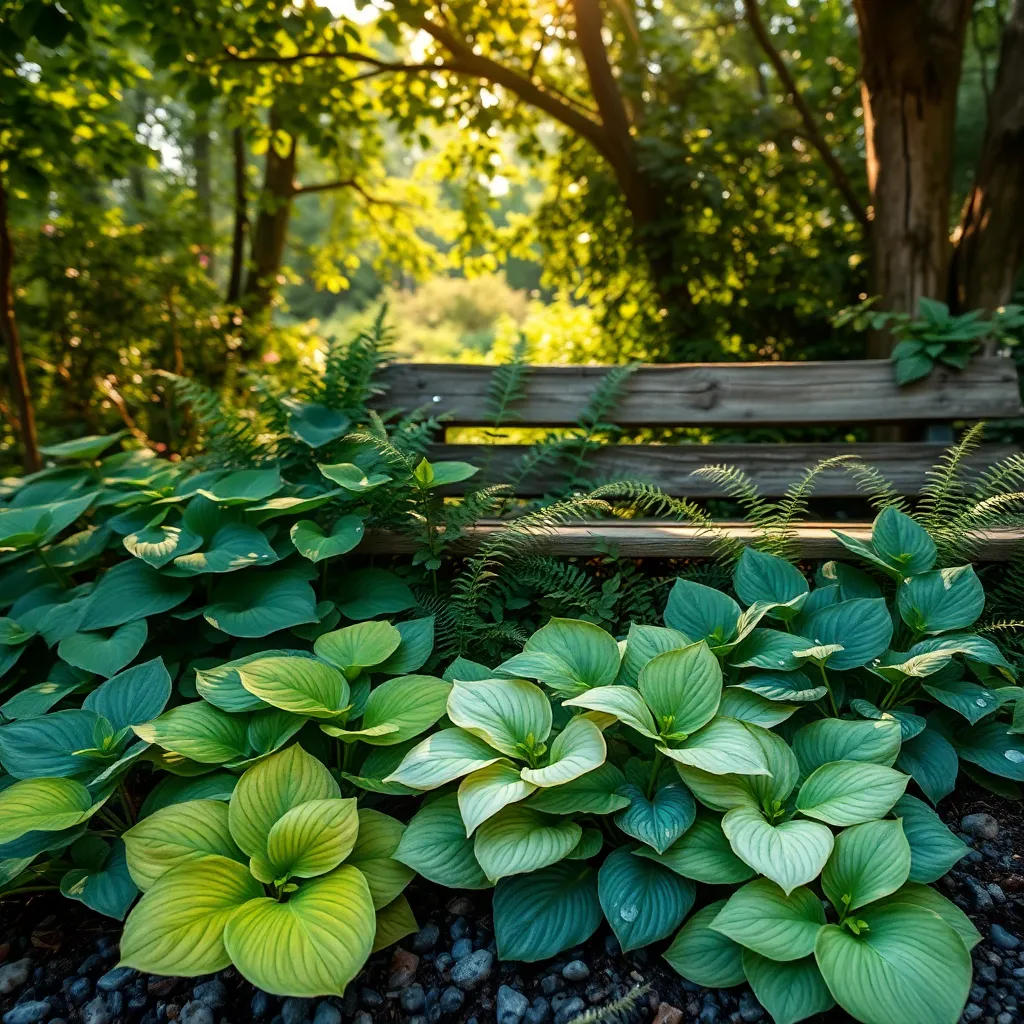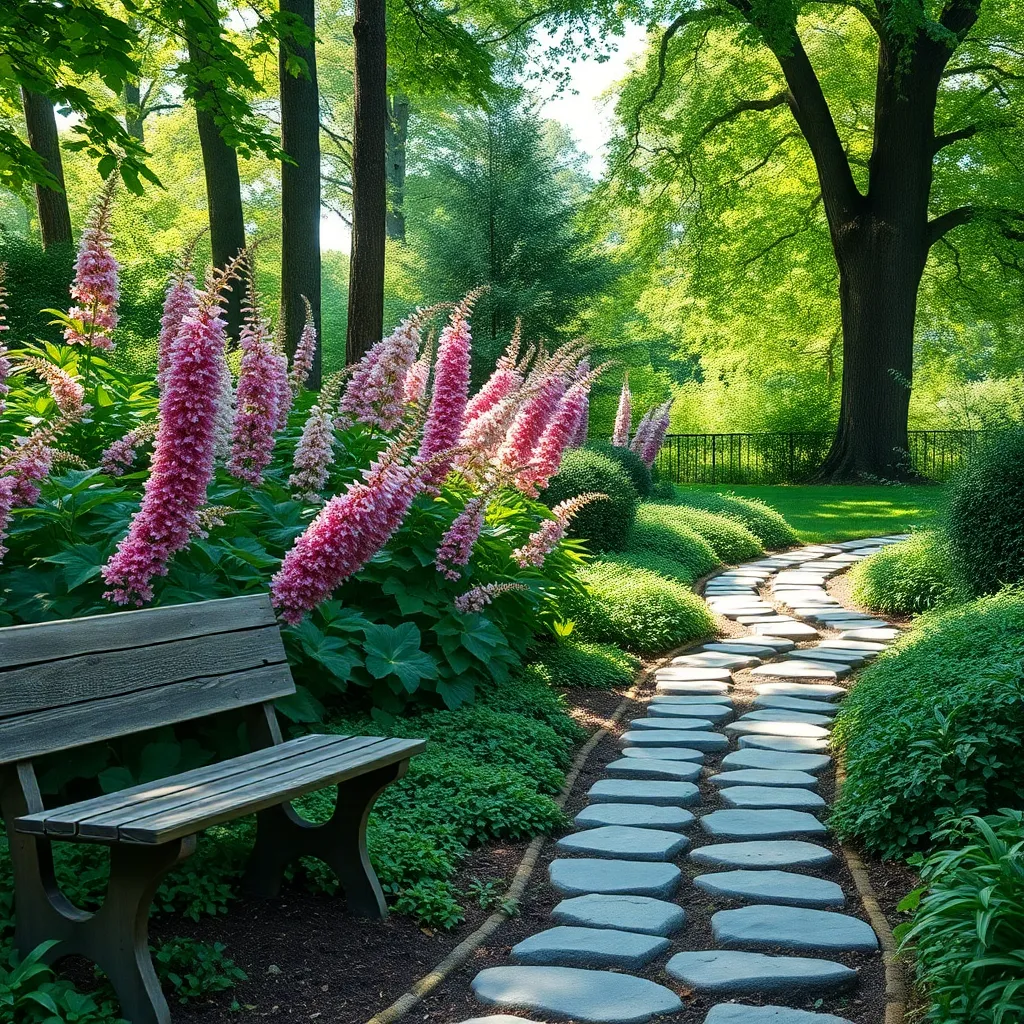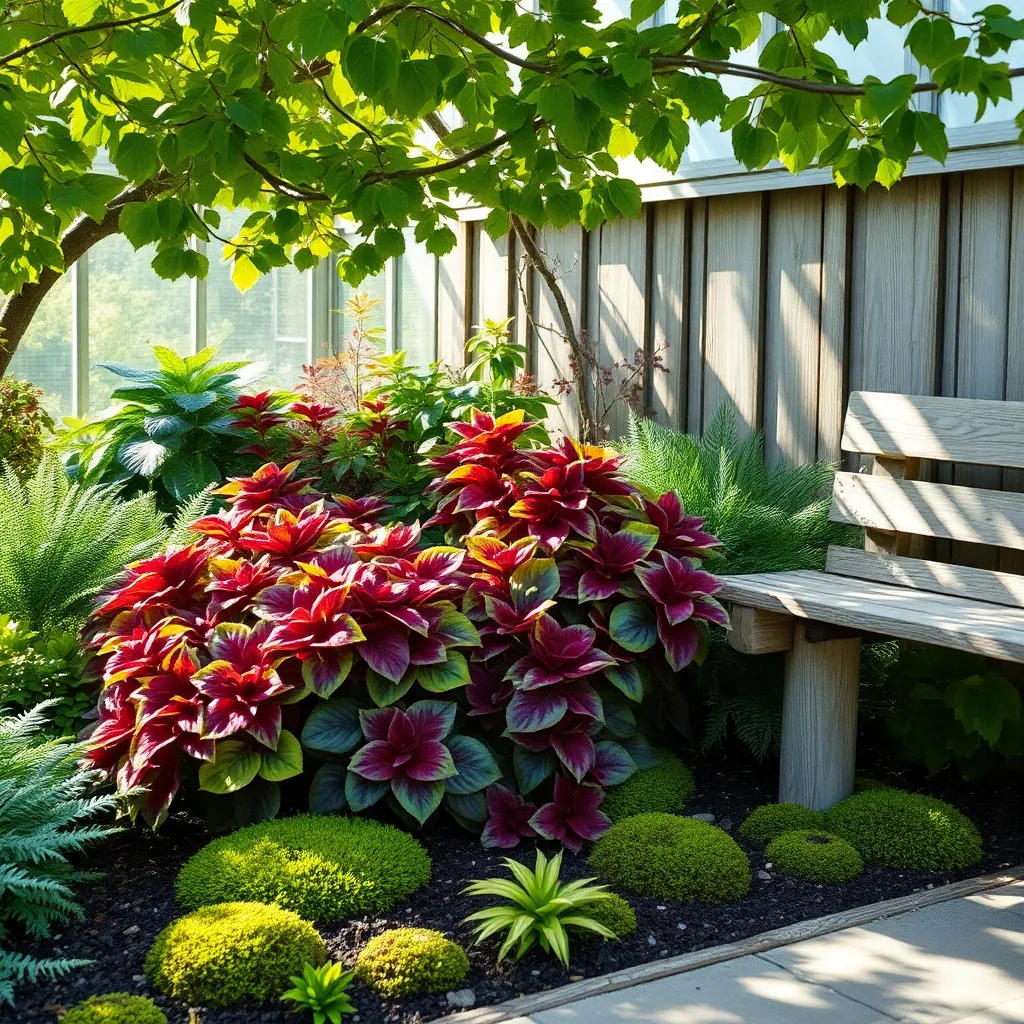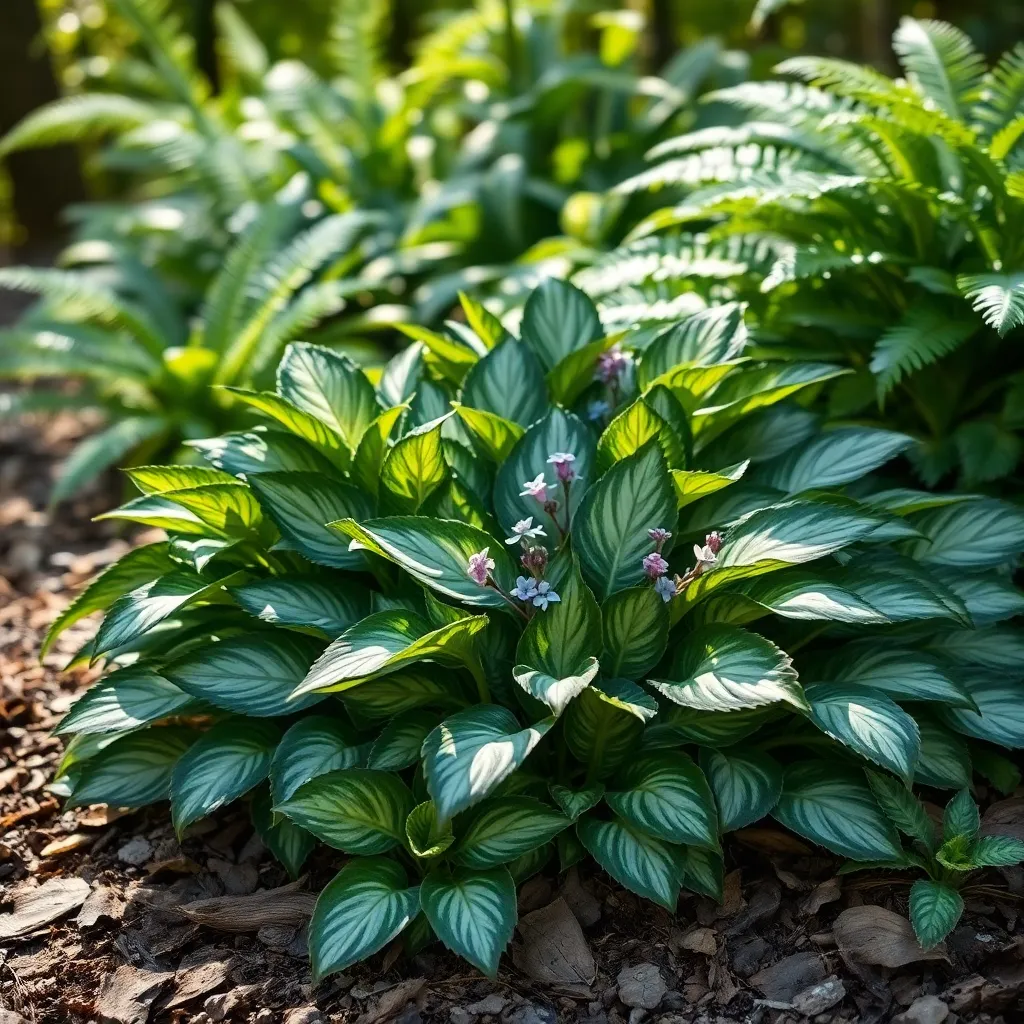Welcome to the delightful world of shade-loving plants, where both novice and seasoned gardeners can discover the joy of transforming shadowy corners into lush, vibrant havens. Whether you’re just starting your gardening journey or have a seasoned green thumb, our guide offers a curated list of plants that thrive in low-light conditions, helping you effortlessly bring life to those overlooked spaces.
With the right selection, even the shadiest spots in your garden or home can become a sanctuary of greenery and tranquility. This guide is your trusted companion, equipping you with practical tips and insights to ensure your shade-loving plants flourish, rewarding you with lush foliage and a sense of accomplishment.
Hosta Varieties (Foliage Diversity for Shady Spots)

Hostas are a versatile group of perennials known for their lush foliage, making them perfect for shady garden spots. They thrive in well-drained, fertile soil and prefer consistent moisture, so regular watering is key to their success.
When planting hostas, it’s important to provide them with some protection from strong winds, as their leaves can be easily damaged. Consider adding a layer of organic mulch around the base to help retain soil moisture and suppress weeds.
There are countless varieties of hostas, ranging from the small ‘Blue Mouse Ears’ to the large ‘Sum and Substance’. Each offers unique leaf colors and textures, from smooth and glossy to heavily corrugated, providing endless design possibilities.
For beginners, start with a few hardy varieties like ‘Patriot’ or ‘June’, which are both forgiving and stunning. More advanced gardeners might experiment with rarer cultivars, paying special attention to their unique light and soil requirements for optimal growth.
Ferns (Lush Greenery for Low-Light Areas)

Ferns are a fantastic choice for gardeners looking to add lush greenery to low-light areas. They thrive in shady environments where other plants might struggle, making them ideal for under-canopy planting or shaded corners of your garden.
To keep your ferns healthy, ensure they are planted in well-draining soil enriched with organic matter. A mix of peat moss, leaf mold, and sand can create an optimal environment, keeping the soil moist but not waterlogged.
Watering is crucial for ferns, as they prefer consistently moist conditions. A good practice is to water deeply once a week, ensuring the soil stays damp but not saturated.
While ferns generally require minimal fertilization, a diluted liquid fertilizer applied monthly during the growing season can boost their growth. For more experienced gardeners, integrating a humidity tray can help maintain the high humidity levels ferns love, especially indoors or in dry climates.
Astilbe (Vibrant Blooms in Shaded Gardens)

Astilbes are a fantastic choice for gardeners looking to add vibrant color to shaded areas. These perennial plants thrive in partial to full shade, making them perfect companions for areas where sunlight is limited.
To ensure your astilbes flourish, plant them in rich, well-draining soil with a slightly acidic to neutral pH. Consistent moisture is key, so it’s crucial to water them regularly, especially during dry spells, to maintain their lush appearance.
Beginner gardeners will appreciate that astilbes require minimal maintenance once established. Simply remove spent blooms to encourage further flowering, and apply a layer of mulch around the base to preserve moisture and control weeds.
For those looking to take their gardening skills to the next level, consider dividing your astilbe clumps every three to four years. This not only promotes healthier growth but also allows you to expand your garden with more of these stunning plants.
Coral Bells (Colorful Leaves for Dim Environments)

Coral Bells, known for their stunning foliage, are an excellent choice for gardeners aiming to add color to shaded areas. These plants thrive in partial to full shade, making them ideal for dim environments where many other plants might struggle.
To achieve the best growth, ensure that your Coral Bells are planted in well-draining soil enriched with organic matter. Regular watering is crucial, especially during dry spells, but be cautious not to overwater, as they dislike soggy conditions.
For beginners, it’s helpful to know that Coral Bells are relatively low maintenance once established, needing only occasional feeding with a balanced, slow-release fertilizer. Advanced gardeners might want to experiment with different varieties, as they offer a wide range of leaf colors, from deep purples to bright greens, which can add visual interest throughout the growing season.
When planting Coral Bells, consider spacing them about 12 to 18 inches apart to allow for adequate air circulation, which helps prevent fungal diseases. Mulching around the plants can help retain moisture and suppress weeds, providing an additional layer of care for these striking plants.
Pulmonaria (Unique Textured Leaves for Shade)

Pulmonaria, often known as lungwort, is a shade-loving perennial that adds a unique texture to garden spaces with its striking foliage. While its distinctive silver-spotted or mottled leaves are a major attraction, Pulmonaria also offers charming clusters of pink, purple, or blue flowers in early spring.
To thrive, Pulmonaria requires a location with dappled sunlight to full shade, making it perfect for those less sunny spots in your garden. It prefers rich, well-draining soil that retains moisture, so consider amending your garden bed with compost to improve soil quality.
Ensure the soil remains consistently moist but not waterlogged, as Pulmonaria does not tolerate drought well. Watering once a week should suffice, but increase frequency during hot or dry periods to keep the plant healthy.
For more experienced gardeners, consider dividing the clumps of Pulmonaria every 3 to 4 years in early spring to maintain vigor and prevent overcrowding. This not only rejuvenates the plant but also gives you more plants to spread throughout your garden.
Conclusion: Growing Success with These Plants
In exploring the realm of shade-loving plants, we’ve uncovered five key concepts that mirror the essentials of nurturing flourishing relationships. First, understanding the unique needs of each plant, much like recognizing individual partner needs, lays the groundwork for growth. Second, the importance of creating a supportive environment parallels fostering emotional safety in relationships. Third, patience stands as a virtue, reminding us that both gardens and relationships thrive over time. Fourth, adaptability highlights the necessity of being open to change and growth. Lastly, the beauty of diversity in plant selection reflects the value of appreciating differences within relationships.
Now, take a moment to assess your own relationship ‘garden.’ Identify one area where you can introduce a new element of understanding or support, and commit to nurturing it daily. As you embark on this journey, bookmark this article for ongoing inspiration and guidance.
Remember, just like a well-tended garden, a thriving relationship requires continuous care and attention. By applying these principles, you are well on your way to cultivating a relationship that not only survives but flourishes. Save this article as your go-to resource for relationship enrichment, and take confident steps toward a future filled with growth and connection.
